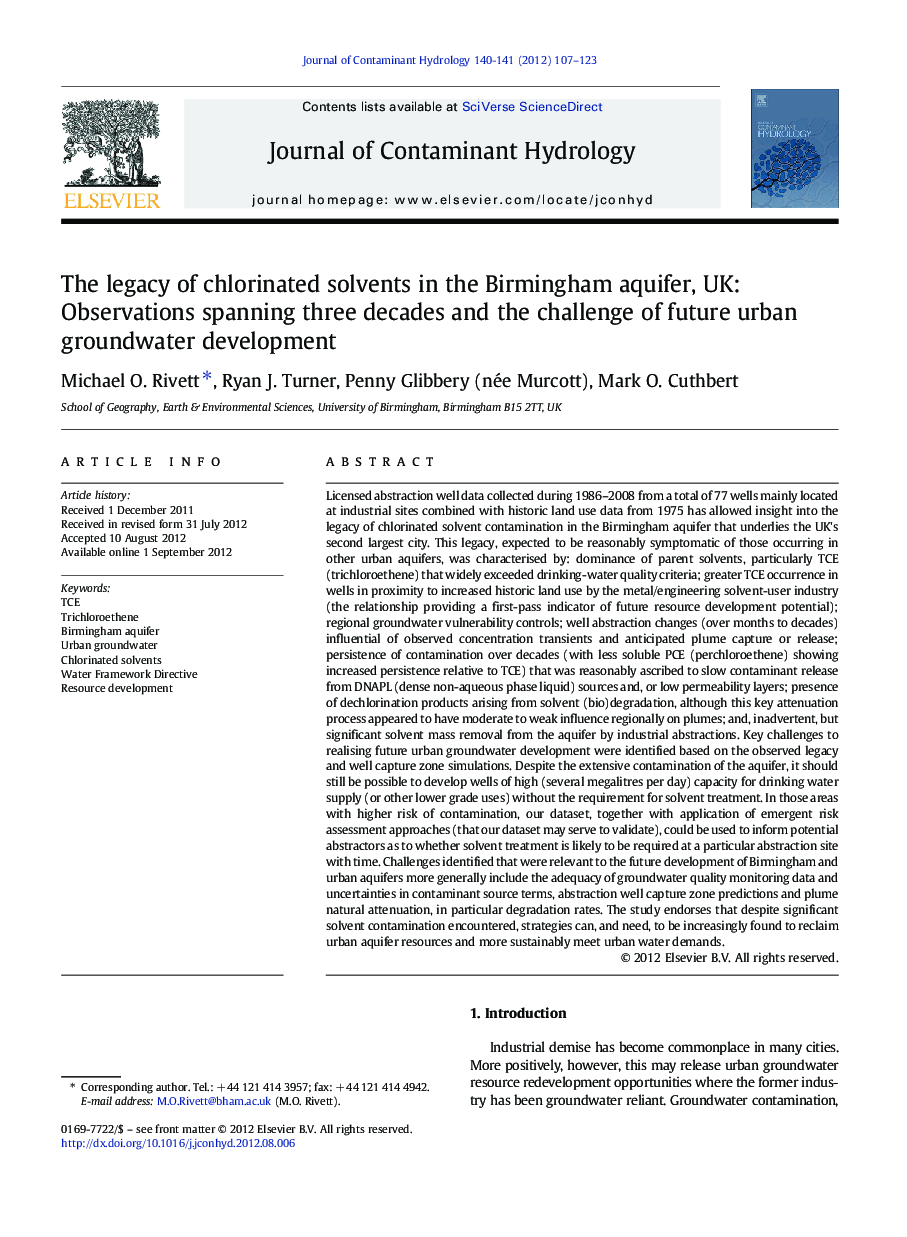| کد مقاله | کد نشریه | سال انتشار | مقاله انگلیسی | نسخه تمام متن |
|---|---|---|---|---|
| 4546741 | 1627064 | 2012 | 17 صفحه PDF | دانلود رایگان |

Licensed abstraction well data collected during 1986–2008 from a total of 77 wells mainly located at industrial sites combined with historic land use data from 1975 has allowed insight into the legacy of chlorinated solvent contamination in the Birmingham aquifer that underlies the UK's second largest city. This legacy, expected to be reasonably symptomatic of those occurring in other urban aquifers, was characterised by: dominance of parent solvents, particularly TCE (trichloroethene) that widely exceeded drinking-water quality criteria; greater TCE occurrence in wells in proximity to increased historic land use by the metal/engineering solvent-user industry (the relationship providing a first-pass indicator of future resource development potential); regional groundwater vulnerability controls; well abstraction changes (over months to decades) influential of observed concentration transients and anticipated plume capture or release; persistence of contamination over decades (with less soluble PCE (perchloroethene) showing increased persistence relative to TCE) that was reasonably ascribed to slow contaminant release from DNAPL (dense non-aqueous phase liquid) sources and, or low permeability layers; presence of dechlorination products arising from solvent (bio)degradation, although this key attenuation process appeared to have moderate to weak influence regionally on plumes; and, inadvertent, but significant solvent mass removal from the aquifer by industrial abstractions. Key challenges to realising future urban groundwater development were identified based on the observed legacy and well capture zone simulations. Despite the extensive contamination of the aquifer, it should still be possible to develop wells of high (several megalitres per day) capacity for drinking water supply (or other lower grade uses) without the requirement for solvent treatment. In those areas with higher risk of contamination, our dataset, together with application of emergent risk assessment approaches (that our dataset may serve to validate), could be used to inform potential abstractors as to whether solvent treatment is likely to be required at a particular abstraction site with time. Challenges identified that were relevant to the future development of Birmingham and urban aquifers more generally include the adequacy of groundwater quality monitoring data and uncertainties in contaminant source terms, abstraction well capture zone predictions and plume natural attenuation, in particular degradation rates. The study endorses that despite significant solvent contamination encountered, strategies can, and need, to be increasingly found to reclaim urban aquifer resources and more sustainably meet urban water demands.
► Legacy of chlorinated solvents in the Birmingham aquifer observed over 1986–2008
► Legacy of persistent TCE controlled by land use, aquifer vulnerability, abstraction
► TCE occurrence–industrial land relationship affords potential resource indicator.
► Uncertainty in sources, capture zones and NA challenges future urban groundwater use.
► Potential of urban supply wells to meet urban water demands remains significant.
Journal: Journal of Contaminant Hydrology - Volumes 140–141, October 2012, Pages 107–123